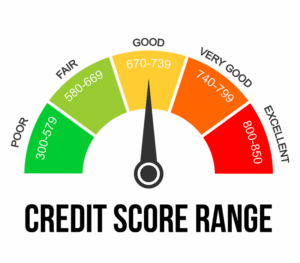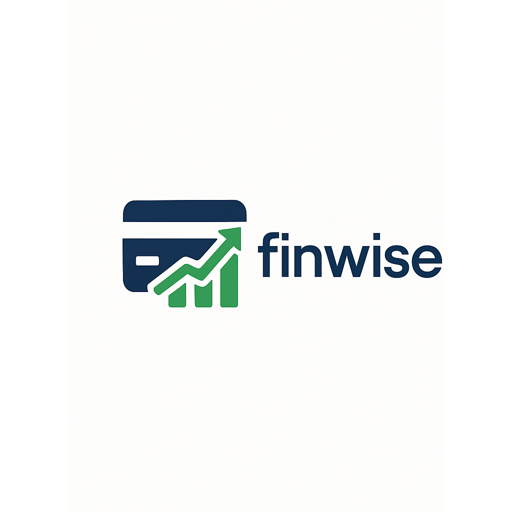High Interest Rates, Credit Cards and the U.S. Consumer: What to Know in 2025
The Fed is still fighting inflation and stabilizing the U.S. economy so interest rates are high. Although the policy may further long-term economic objectives, American consumers are acutely affected by it–and especially those who depend on their credit cards for day-to-day needs.

Here’s a closer look at how those high interest rates can have an impact on credit card users, what we might expect to see in the months ahead and strategies for managing your money wisely in this type of environment.
What’s Causing the High Rates of Interest?
The Fed started to raise interest rates in 2022, responding to an uptick in inflation. Disparate Fed Hikes For decades, with low rates as the policy of choice, this attack on credit has pushed the federal funds rate to its highest since before the 2008 financial crisis. Even in mid-2025, these rates don’t bear the hallmarks of a sudden collapse.
The Fed does not actually set credit card rates, but they are inextricably linked to the central bank’s decisions. Many credit cards have APRs (annual percentage rates) that bump up and down along with the prime rate — a base interest rate that is closely correlated with the pace of the Fed’s rate increases.
That means the average APR that consumers will face at banks and other card issuers is above 21%, with some cards charging even higher rates, based on a user’s credit score and financial history.
How This Impacts The Average Cardholder
For borrowers, this means more costly funds to borrow. If you carry balances on your credit cards month to month, odds are you’re paying dramatically more in interest now than a few years ago.
Here are some tangible examples of what that looks like:
For 2020, a $5,000 balance on a card with a 17% APR would have been costing you about $850 in annual interest.
By 2025, with a 22 percent APR, that same balance could now cost you $1,100 or more a year in interest.
That’s an additional $250+ being siphoned directly from your pocket — money you could be socking away as savings, plumping up investments, or just using to keep the pulse in your wallet.
The Risk of the Debt Spiral
As interest charges increase, more and more Americans are falling into a debt spiral: They use credit cards to make ends meet as living costs rise, but they can’t pay off the balance because of interest. This leads to an alarming cycle where:
Monthly payments get more difficult to afford.
More of the payment is interest rather than principal.
Credit utilization increases, potentially damaging your credit score.
You become perceived as higher risk by lenders, limiting your access to better rates or higher limits.
And new research suggests that delinquency rates on credit card debt are climbing — particularly among young adults and people living in low-income areas. It’s an era in which a single missed payment can set off a cascade of financial repercussions.
How to Get By in a High-Rate Credit Environment
If you maintain a balance or depend on using credit cards every day, you’re not alone — and there are savvy strategies to help protect your finances.
Prioritize Paying Down Balances
If you can’t pay it all off each month, use extra cash to pay down the highest-interest debt first (this is usually referred to as the “avalanche method”). Small additional payments can help you save on interest in the long run, even if only slightly here and there.
Tip: Use any windfalls — such as tax refunds or bonuses — to pay down your credit card debt.
Explore Balance Transfer Offers
A high-rate environment doesn’t change the fact that some credit card issuers are still offering 0% APR balance transfer deals. These deals usually come with a short promotional periods (6–21 months) and a balance transfer fee (typically 3% to 5%).
Warning: Only make use of these promotions if you can actually pay off the balance before the promotional apr expires.
Avoid Minimum-Only Payments
When you make only the minimum payment, it’s easy to remain in debt for years. Credit card calculators can show you how much you’ll pay in total interest if you stay the course with the minimum — maybe it’ll inspire you to pay a bit more.
Create a Spending Plan
Reevaluate your budget. As inflation cools but continues to run high in certain categories (such as housing and health care), it is important to cut nonessential spending so you can put that money toward debt repayment.
Is a Fixed-Rate Loan the Best Option?
If you have good credit, consider consolidating high-interest card debt into a personal loan with a fixed interest rate. These loans typically offer:
Interest rates below most credit cards.
Fixed amounts for a fixed term.
A clear payoff timeline.
But it only works if you stop creating new credit card debt after consolidation.
How Credit Card Issuers Are Reacting
Card issuers are getting pickier about who qualifies for premium cards or high credit limits. They’re also:
Tightening lending standards.
Increasing minimum payment requirements.
Directing newbies to less promos.
And at the same time, a few issuers are unveiling rewards cards not focused on travel perks but necessities (groceries or gas) as well, heeding that push in consumer behavior.
What’s Next? Interest Rate Outlook for Late 2025 and After
The Fed has indicated the possibility of rate cuts in 2026, but analysts warn that no big cuts are expected to see near term. The central bank has continued to keep its eye on reaching some of its inflation targets before loosening monetary policy.
That means that credit card APRs probably will stay elevated for the remainder of 2025 — and well into 2026, perhaps.
Final Thoughts: Safeguarding Your Wallet in a High-Rate Environment
Interest on a credit card is the meanest expense that every user of plastic must battle, but it doesn’t have to be a catastrophe. And if you understand how rates affect your debt — and take action before greater interest costs set in — the better chance you’ll have of maintaining control over your financial life.
If you’re having trouble making payments, don’t delay. Contact your card issuer, research debt counseling services or talk to a financial adviser. The sooner you act, the better off you’ll be financially when interest rates do start to drop.
Our Post

High Interest Rates, Credit Cards and the U.S. Consumer: What to Know in 2025
The Note: How Decelerating U.S. Economic Growth Affects Using Consumer Credit


